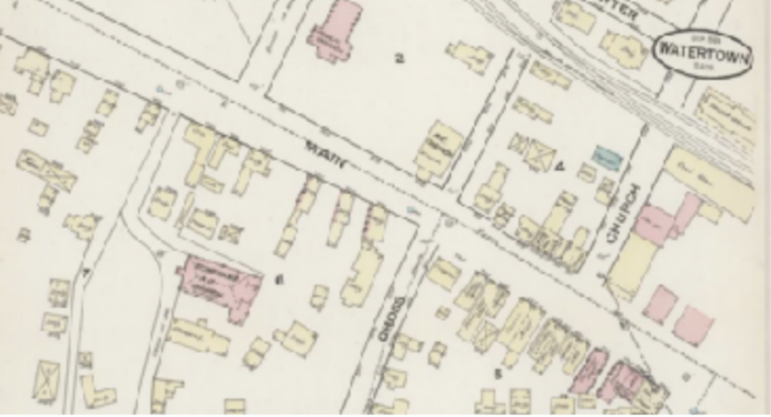
By Linda Scott
Watertown Resident
Well, I guess it’s time to do my version of that famous Joni Mitchell song. “Big Yellow Taxi.” You really don’t know what you’ve got till it’s gone.
You can thank a Watertown News reader for this article. This reader has repeatedly (and erroneously) thrown out the claim that a citizen’s petition asking for an historic study of 104-106 Main Street was some kind of “bogus” activity.
I feel an obligation to defend the honor of that little, unassuming building on Main Street, writing a history that needs to be told. This is not a history of the literati and glitterati of Watertown, but of the merchants and workers, the common men and women who built Watertown. It was present for their triumphs and struggles.
In June 2022, when the Watertown City Council turned down a petition signed by 150 citizens to take a look at this building and see if it had any historical significance, I thought, “I can read … I can research … and I want to know.” I’d like to thank the Watertown Public Library (and Caroline
Littlewood, in particular) for their patient forbearance for my endless and often oddball questions.
That started a learning voyage for me that has lasted for over a year now and has ended up involving both Main and Cross Streets. It’s quite a story, and I came close to making it into a video, but that idea is tucked away for another day.
I’d like to start in an odd place, with an obituary, dated December 8, 1899 in the Watertown Enterprise for one of Watertown’s most prominent citizens, Samuel Walker:
“The death of Mr. Samuel Walker, which occurred last Saturday evening, is the cause of universal regret and much sympathy for the bereaved relatives. Mr. Walker was one of Watertown’s staunchest citizens, loyal to her interests, honored by her citizens. He will not only be missed about the streets, but especially within the Town Meeting, where his sound and able judgment was always recognized in matters of finance. Few if any citizens had a better knowledge of the matters of the town,…his words were always listened to with deep interest and attention, and his advice was followed in almost every instance …”
Sam Walker. Have you ever heard of him? I knew that I hadn’t.
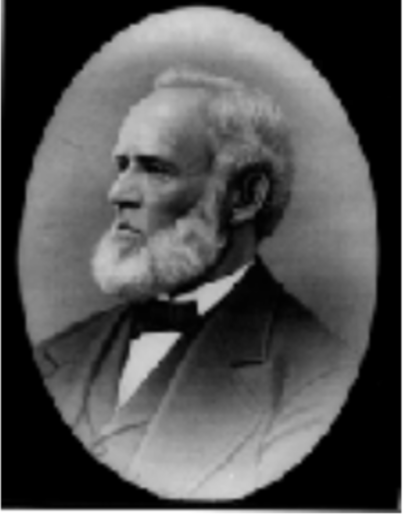
Who Was Samuel Walker?
Samuel Walker became a very important man in Watertown. When he first came here from New Hampshire with his wife, Nancy (a Boston girl), and his baby daughter, Abby, around 1854, his business was selling produce.
That was one of Watertown’s premier businesses in the 1850’s, due to our many farms. In Crossroads on the Charles, deLeigh Hodges states that in the midcentury: “About 123 fruit and vegetable farms were located on Watertown’s north boundary with Belmont and in Arlington and Waltham. This neighborhood of prosperous farmers provided food for the Boston markets. Their orchards produced between 20,000 and 80,000 barrels of apples annually, with winter deliveries of hay, potatoes and celery as late as January.” Samuel was the son of a farmer, so his connections probably influenced his chosen profession as well.
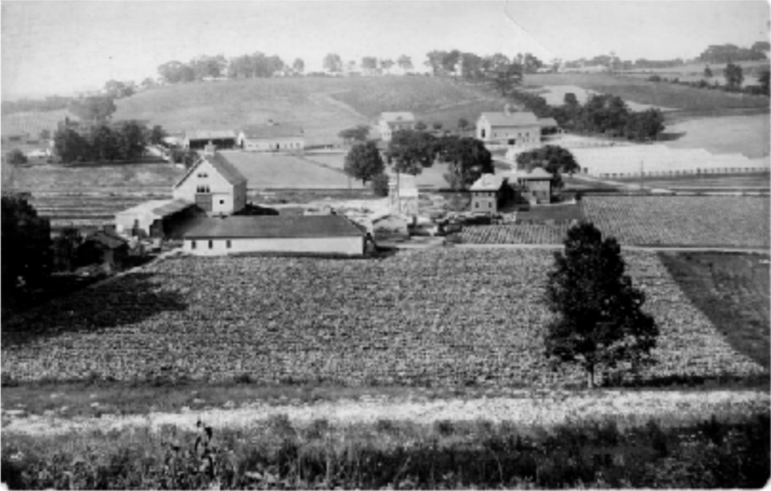
But by about 1860, Walker had a connection to import Scottish coal and turn it into kerosene.
The BBC puts this time into context:
BBC: 1859. The modern oil industry is born
The oil industry as we know it began in the mid-19th Century with the discovery of the world’s first commercially viable oil well in the USA. It came at a time when emerging technology created new products from oil. One product, kerosene, became popular as a cheap, clean fuel for lighting homes. A few years later, America’s first commercial oil well was created at Titusville, Pennsylvania when a new technique was pioneered using a pipeline to line the bore holes to allow deeper drilling. The success of the well, plus a demand for kerosene, triggered an oil rush and began a major new industry.

Samuel Walker became very rich, and he began to share his time, talents and wealth with Watertown. He became involved in Watertown politics. He was Watertown’s “Mr. Fiscal” in the 1800’s, arranging the Town’s debt payments in ways that were less of a burden to the community.
For 40 years he was a prominent citizen. He was a Watertown selectman from 1877 to 1879, and he represented Watertown and Belmont in the Great and General Court in 1881 and 1882. He contributed more than $4,000 (in today’s money over $120,000) to fund the library building. With this donation came a stipulation that it be built on Main Street. “He disclaimed any credit for his generosity, stating that it was a matter of business with him, and that he gave the money so that the old building on the land could be removed and the ground improved.” (his obituary, Watertown Enterprise).
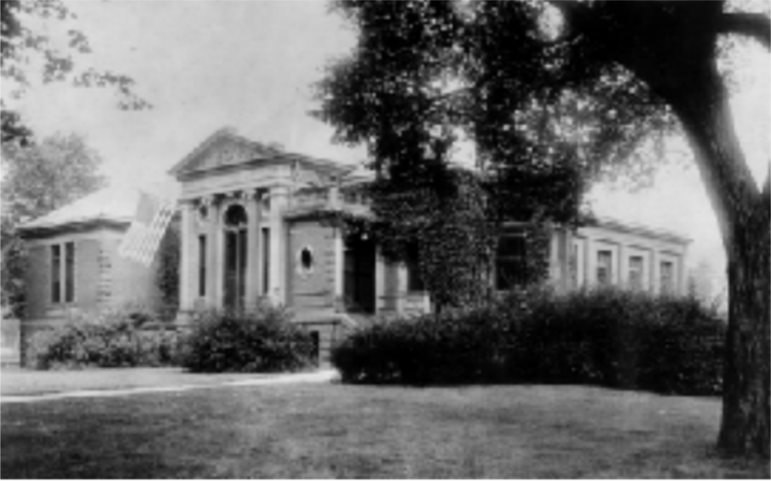
His contributions to Watertown were substantial.
You can find his house still standing on Winter Street. His oldest daughter, Abby, lived with her husband, Charles B. Gardner, just down the street. Town directories from 1874 to 1903 show that Winter Street should have been renamed “Walker Lane” for all of the Walker family activity on that very small street. They must have been a close knit family. Close in death, as they were in life, the whole family can be found buried at Mt. Auburn Cemetery.
The Gardner house was in severe disrepair. There’s a new house there now that was built in a similar style to the old. Both old houses are in MACRIS (Massachusetts Cultural Resource information System).
Another daughter, Mabelle, after living with her husband on “Walker Lane” for years, eventually moved to 26 Bailey Road and lived there until her death. Her husband was Dr. John Dana Dickinson, a dentist. Mabelle was one of the founding members of the Watertown DAR.
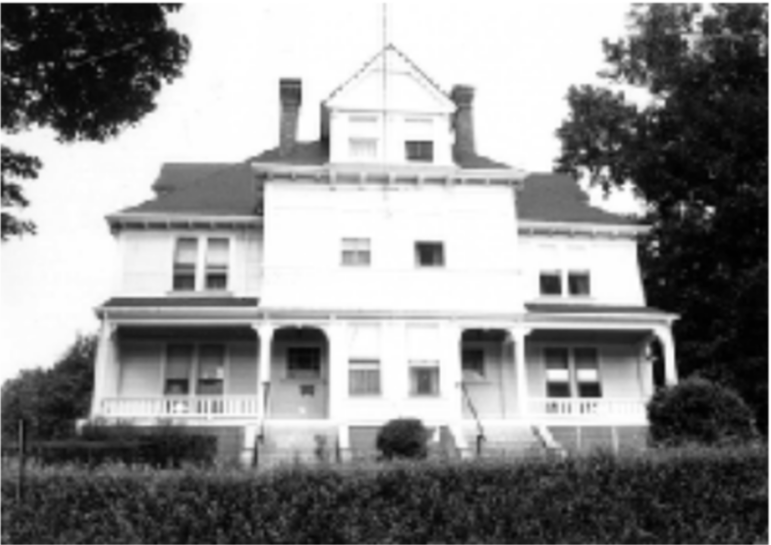
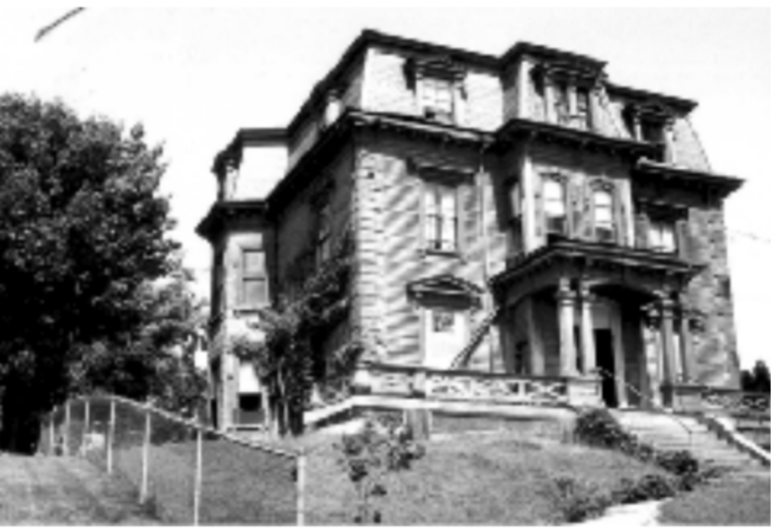
Samuel Walker Commercial Property
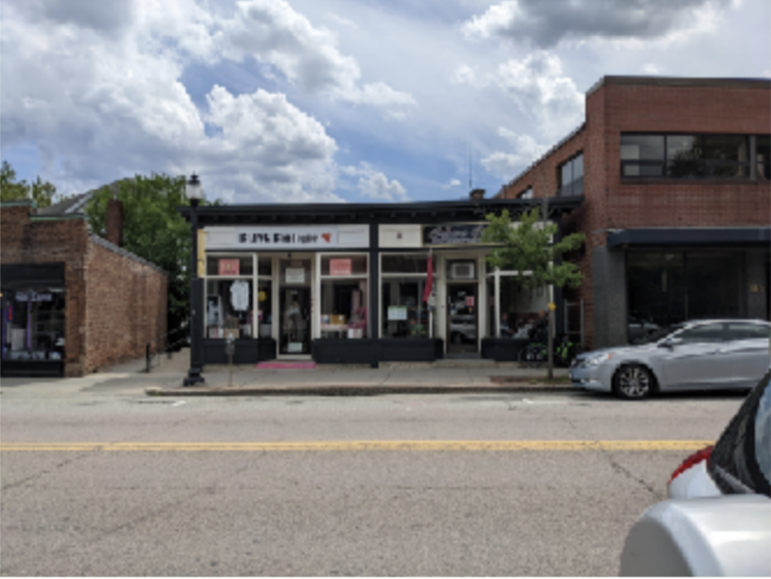
Samuel Walker owned a lot of real estate, and this little building was so close to his house that it could probably be seen from his porch on Winter Street.
This building has a hidden story to tell about the working class, as well as the privileged or merchant class of Watertown. Let’s take a look.
This little, unassuming building and its former residents and owners were all important bell weathers of their time and reflect Watertown and Massachusetts history. Among their many properties, real estate was bought and sold, but this little piece of Americana was retained by the Walker family.
This property was owned for about 40 years by the Samuel Walker family. It can be seen on a Sanborn map in 1884 and was originally built to house the influx of working class families. I’m not sure whether it was built even earlier than that, but I am sure that Samuel Walker owned it in 1884.

One family who were tenants of the Walkers in 104-106 Main St. (then numbered 80 Main) were the Godings. Mary Goding was the widow of a Civil War veteran named Emulous Goding. Emulous served in the Union Army from 1861 to 1864, first in the 8th Maine regiment. Later he was attached to the Horse Battery in the U.S. Artillery.
After the war, he came to Watertown to take a job in a foundry. After his death, his widow, Mary, and her sons called this small building on Main Street home. Emulous’ Civil War veteran’s pension helped his family to survive.
The Godings are an example of an American success story as much as Samuel Walker is. Mary’s son, Herbert, was a tradesman, a plumber. Herbert located his business at 8 Church St. He married a Watertown girl, grew his business, and bought a house for his family on Marshall Street.
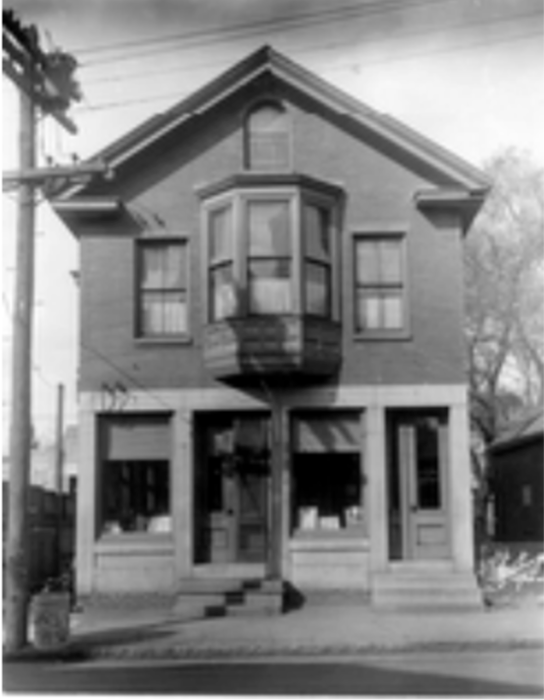
Mary’s other son, Harry, became a stenographer for the U.S. Department of Agriculture.
The widow Smith and her children shared this house with the widow Goding and her family for a time. She and Edward Smith married when they were both 19. Her parents were from Ireland, but she was born in Watertown.
Edward was a brakeman for the Fitchburg Railroad. Railroad work was low paying and dangerous work in general, but the most dangerous job was brakeman.

Before airbrakes were invented, brakemen stayed on the tops of trains, running and jumping from one car to the next, quickly releasing or tightening the brake on each car.
This work was especially treacherous in winter, when the tops of cars could be slippery, and the danger of falling between cars on a moving train was highest.
Edward died on a February day at the age of 26. Cause of death: “run over by the cars.” Annie raised her daughter, Catherine and son Edward, for some time in this little house on Main Street after Edward’s death.
This building housed other folks of various professions (clerks, etc.) who added to that small town feeling of what was once Watertown’s Main Street.
By around 1906, many houses were being built, especially south of Main Street, to house the many new workers in Watertown’s prosperous factories.
After Samuel’s death in 1899, Walker’s daughters, Abby Gardner and Mabelle Dickinson, changed their little building on Main Street into stores to fit the commercial needs of the area and times.
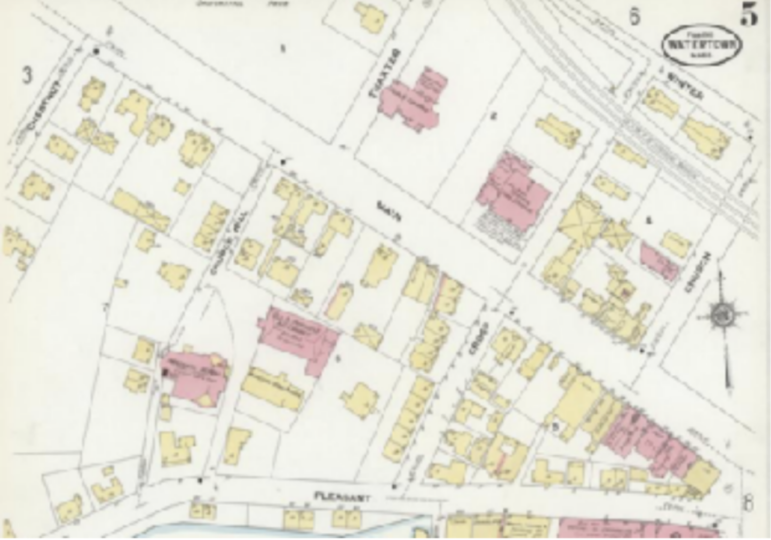
On south side of Main Street, the second building in from corner of Main and Cross Streets What you see today is what it looked like over 100 years ago when they renovated it. This type of storefront could be seen elsewhere on Main Street. This building is the only one left and visually takes us back to Watertown in the early 1900s.
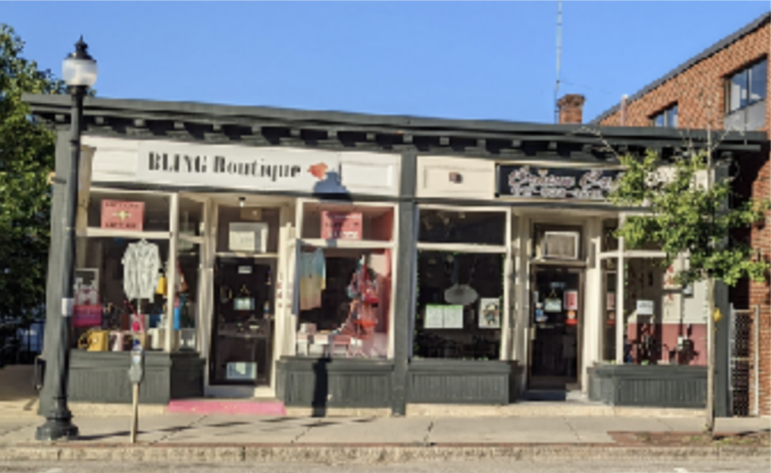
As a matter of fact. if you go to the Watertown Department of Community Development and Planning site and go to planning document archive and then the 1989 Watertown Square Design Handbook, (the link is here. Refer to pages 9 and 25): https://portal.laserfiche.com/Portal/DocView.aspx?id=21106&repo=r-5ece5628 you’ll see this:
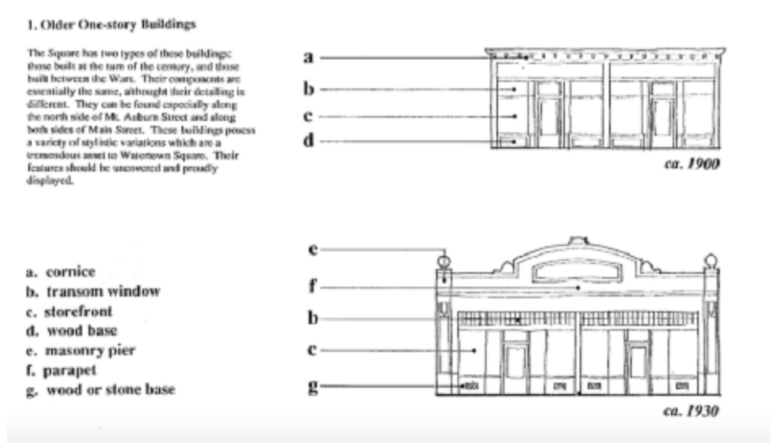
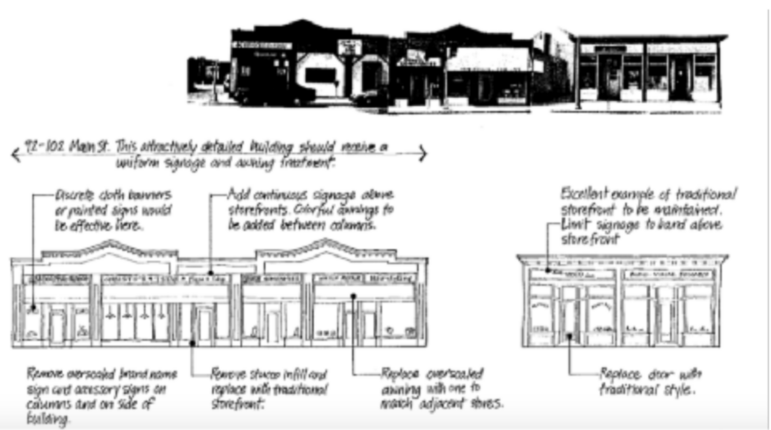
Do you see anything familiar? According to our planners back then, this building is “An excellent example of a traditional storefront to be maintained.”
There’s so much more to this story. For instance, the Gardner family “curse,” how all of Cross Street ended up in the possession of the two Walker girls, who seemed to have inherited their father’s business acumen and who seemed to have a hands-on business approach, rare for women in that age.
One of the Walkers’ store tenants was Antonio Lauricella, who sold produce there. He had his business at 106 Main St. from 1917 to at least 1943. In 1943, Mr. Lauricella was a victim of a holdup in this building.
When he was preparing to close up for the night, three men entered his store and demanded money. When he resisted, he was hit over the head with the butt of a gun. One of the “gang who couldn’t shoot straight” had fired a bullet into the floor, which ricocheted and hit poor Mr. Lauricella in the shin.
The three took off in the sedan they had used to rob another shopkeeper in Jamaica Plain. A big deal was made in the news over the fact that this happened just a block from the police station. In his obituary, it is stated,”Mr. Walker owned considerable real estate in Watertown and a number of his tenants were among those who attended (his funeral). By them he is held in the fondest remembrance. He was an exceptionally kind and upright landlord and was honored by his tenants.”
Samuel was involved in his tenants’ lives and they in his. This building and these tenants exemplified the struggles of that time of living in Watertown, and it seems, by the longevity of tenants that his daughters carried on that respect for others, regardless of societal rank.
“Just because this building is old, doesn’t make it historic.”
– Watertown owner/developer 2022
That is a statement frequently made by those who, for their own reasons, prefer not to do the research. Forgotten history is like buried treasure. It stays buried until someone comes along with a map, a shovel, and the determination to unearth it.
Letters to the Editor can be sent to watertownmanews@gmail.com
Remember Lauricella’s Spa well, was there 60/70’s. Bob Quirks Grandparents were the proprietors I believe. Thanks Linda
Read the second sentence in the article you linked to at the beginning of your article. (“The effort was started as a way to prevent a proposed project in the area.”)
That 100% proves the point I am making about the petition being in bad faith. They were just using it as a mechanism to stop the proposed development. That was clearly understood by the council (that unanimously voted against it and even the other property owner that were involved in the then proposed project. Even Clyde Youngers comments during the meeting (again in the article you linked to, show that the petition was all about stopping a development and had nothing to do with preserving the historical significance of the building (“Reviewing the proposed development is completely out of character with the area.”)
Now if you do feel so strongly about the historical significance of Walker after all your research, why not work the the property owner of his former house on Winter St to get that designated a historical site. This makes much more sense than giving one of his “many properties” in Watertown that he used as a rental that designation.
Mr. York, The City Council president, on July 11, asked for a second on the motion to approve the taxpayers’ FAR petition. Hearing no second, the council president announced no action on the petition at that time. There was no vote on the FAR petition. The petition on transition areas between residential and industrial areas was not approved on a voice vote.
Mr. Field of the Department of Planning and Development led off the hearing with the department’s report advising the council not to approve the FAR petition. He made the case that action was not advised since the City Council had voted $250,000 for a Watertown Square Study and $50,000 for a review and update of the Zoning Code. He informed the council that a consultant for the Watertown Square Study would be selected shortly.
Mr. Field effectively said that the taxpayers’ FAR petition served as an impetus for the study and the zoning code review and added that the Planning Department would be looking at Form Based Codes as a planning tool as the taxpayers’ petition had urged. Moreover, Mr. Field informed that the Watertown Square Study would afford residents with opportunities for participation and collaboration.
Obviously, Mr. York, by taking no action on the FAR petition, the council did not lock in an FAR 4 or approve or reject an FAR of 2.2. Why? Because the council approved spending taxpayers’ money for a study of Watertown Square, and our elected representatives want to see what, if any, zoning and/or FAR amendments the study recommends. Still to be determined are the scope of the study area and provisions for citizen participation in the work product.
Making baseless charges about the motivation of the concerned citizens who initiated the petition process and the more than 200 signatories is crassly cynical and deserving of harsh criticism. The Watertown Square Study, the zoning review, and the Comprehensive Plan are collectively a reset button for the city, giving it one last chance to refine its identity and avoid building blunders. When it comes to development in Watertown Square and elsewhere in the city, it is too late to reverse some of the consequences of decisions made recently and even decades ago. We can, though, acknowledge the importance of architecture, such as the iconic 1900s-era 104 and 106 storefronts, as representative of the city’s civic history.
My claims are not baseless and just repeating that over and over again doesn’t make you position valid in any way. (here is the first article the outlined Clyde’s intent. https://www.watertownmanews.com/2022/05/18/possible-main-st-project-has-restaurant-owners-worried-about-future/) I was never about preserving buildings, it was about stop a project that Clyde felt is too large for main street.
I don’t often call people liars, but when I do, I make sure the bring receipts. You are correct that I don’t know what the motivations were of everyone that signed, but I know the intentions of the person that started the petition and it had nothing to do with historic preservation. As with most bad faith petitions Clyde used peoples interest in historic preservation to try and derail a project he thought was too big. He used those people as pawns to achieve his goal, and now your out here defending it instead of just admitting your were used for alternative motives.
But I get it, no one wants to think that their friends would use them in this way. But that is exactly what happened, and it is why the council has not cast a single vote to support any of these petitions.
These claims of bad faith are unseemly, getting tiresome, and accomplish nothing positive whatsoever for our community. Time to beat some other drum.
And True, you forgot True. I hope the next time this group tries to call me a liar they have something to actually back that claim up with.
I am 100% open to admit my mistakes when I make them and concede my argument when it fails, but don’t you think for one second you are going to call me a liar by saying my claims are baseless when all you have to do is scroll through the articles on this website and read the quotes from the people involved to find the evidence.
Seems like this is a person who will go to great lengths to slander his neighbors–folks he does not know. It’s a disgrace. Some people will say anything about their neighbors to try and win an argument.
Stick to policy and stop the personal slander. It doesn’t look good for you.
I don’t think we will get any agreement on this discussion. Any new comments on the issue of the historical nature of Main Street and the project proposed for the area would be welcomed.
The notion that “the structure should be preserved for historical reasons,” and the notion that “interesting things happened on this property and/or involving its owners” are two different things. The latter could probably be said about most old buildings, and people don’t learn about the history from seeing or using the building. Instead, we should have more plaques! Maybe we could put a summary of this article and a QR code to the full account there.
Mr. Lashof-Sullivan, In Europe, especially, Germany, Belgium, and the Netherlands, you will find stumbling stones or Stolpersteine. They are concrete cubes capped with a brass plate imbedded in the pavement in front of houses and inscribed with the name and dates of the resident victims of Nazi persecution or death. Most of the 75,000 Stolpersteine installed since 1992 honor Jewish Holocaust victims, but some commemorate gypsies, Poles, gay people, blacks, communists, anti-Nazi resistance fighters, and others.
Watertown could implement a version: Here stood two iconic 1900s storefronts destroyed to make way for a big, bulky, bland mixed-use, auto-centric and child-proof market rate rental development. To locate lost Watertown Square and see evidence of heritage crime go to the library just across the street from where the 104 and 106 Main St. storefronts once stood.
This, but unironically.
Seriously though, historical markers are a great way for people to learn about history. Unclear to me how anyone actually learns anything by forcing the owner of 104 and 106 Main St. to maintain a somewhat nondescript retail space against their will — and not even maintaining it in historical condition, since Ling Boutique and Crown Café are not themselves 100 years old.
The words in the section referenced said the petition wanted “to take a look at this building and see if it had any historical significance” before final decisions were made on all sites on Main St.
Sadly, our town/city has not done a good job of preserving much of our history over the years. We have few historic buildings to visit to understand our past and the caring leaders then who helped to develop Watertown and devoted their time to making good decisions to create worthy structures like the library and small businesses to employ and serve the residents. Fortunately others at that time continued this work and added more housing on Main St. and small stores for workers.
So often these accusations of stopping development come up with no reference to other facts. The decisions on what to do with Main St. and Watertown Sq. are now in the hands of ‘professionals’ who may or may not consider our history in the plans they propose.
Assuming what the Councilors Main St. petition decisions were based on is just that, an assumption. I would think that they had a myriad of thoughts that they failed to express that night that could have involved FAR factors, not specific enough demands and other questions.
Is it too much to ask to pursue all avenues before making decisions that cannot be reversed? Can history and new ideas be merged somehow? Being open to numerous ideas seems to be the better process.
As Robert Penn Warren said, “History cannot give us a program for the future, but it can give us a fuller understanding of ourselves, and of our common humanity, so that we can better face the future.”
Thank you, Linda, for your extensive research and informing us of part of Watertown’s history and the people who helped shape our little town/city.
Sadly we live in environment where people have ZERO respect for the private property rights of others. They use zoning a weapon, because they don’t like a change in their neighborhood.
Well, things change. And before you buy your home, making perhaps the largest investment of your life, the responsible thing to do is check out the zoning in your neighborhood and in abutting neighborhood, indeed in the who community. See what can be built near you. Just because there is a block of quaint little stores around the corner from the house you’re about to buy, doesn’t mean the area is not zoned for a multistory apartment complex. So shame on you, if you didn’t do that research. It proves you’re an irresponsible consumer.
The fundamental rule when purchasing real estate is Caveat Emptor — Let the buyer beware.
Since Ms. Scott like to do research I would refer to Pennsylvania Coal Co. v. Mahon, 260 U.S. 393 (1922). In said case, The Supreme Court of the United States noted that property owners have among other rights, the right to an investment backed expectation. Thus zoning changes can only go so far, before they become a “taking” under the 5th Amendment and therefore require just compensation. In other words, a zoning change the devalues someone property, is in effect, eminent domain.
The case actually dealt with a similar situation, whereby particular legislation (The Kohler Act) violated the taking clause of the 5th Amendment. Again similar to what these residents want to do. Pass an ordinance, declaring this area a historical zone. This would greatly devalue the property.
The aforementioned case, was decided by an 8-1, the majority opinion was written and delivered for the Court, by the Great Jurist and Legal Scholar Oliver Wendall Holmes.
In brief, what these people want to do amounts to theft. They want to steal a huge amount of value from this property owner’s portfolio.
But aren’t you saying that people who live in Watertown (anywhere in Watertown? Just nearby? Principle is unclear…) have the right to tell the owner of 104 and 106 Main St. storefront that they can’t do anything? If property rights are so sacrosanct, what is the principle by which the “property” rights of random people all over Watertown somehow can tell the actual owner of 104 and 106 Main St. what they can and can’t do on their property? What about their rights?
Like, either you are for democratic control (in which case the elected counsel has spoken), or you are for private property, which ought to mean that the actual owner of the property gets to decide. I can’t think of any sensible rule where a group of people (who, BTW, ran candidates on a “don’t change Main St.” platform and lost the election) should get to decide.
The businesses in the building are just renters not owners. The crown diner was a month to month lease so they had literally no leverage, not sure about bling .
I must have missed that campaign “don’t change Main St.” could you please explain this more in depth and which Candidates ran on this platform Thank You
Mr. Dimascio, You must be familiar with Village of Euclid v. Ambler Realty Co., 272 U.S. 365 (1926). The holding in this Supreme Court case confirmed the right of municipalities to use their police power to constrain the rights of private property owners in the interest of public heath, safety, morals or general welfare.
Euclid, Ohio imposed a zoning ordinance whose purpose was to preserve its residential character by preventing an incursion of industry from the nearby city of Cleveland. Ambler Realty owned 68 acres of land in Euclid and wanted to develop it for industry. Euclid’s zoning thwarted Ambler’s objective. Ambler said the town violated its due process rights by enacting an ordinance that substantially reduced the property’s value because the zoning uses were narrowly defined. In a six to 3 ruling the Supreme Court majority (George Sutherland, William Howard Taft, Oliver Wendell Holmes Jr., Harlan Fiske Stone, Louis Dembitz Brandeis, and Edward Terry Sanford) rejected Ambler’s argument that the zoning ordinance was unconstitutional, holding that it was neither arbitrary nor unreasonable and didn’t exceed the Euclid government’s police power. Sutherland wrote that a party challenging a law to which rational basis applies, which was the case with Euclid v. Ambler, needs to show compelling evidence to support its burden of proof, which Ambler had not done. Ambler had relied on speculation and conjecture regarding the extent of the property’s depreciation.
This was the landmark Supreme Court case validating zoning ordinances and confirming local government’s broad discretion. It’s true that land use regulations may sometimes be held to constitute a taking that requires compensation even if they are constitutionally valid; however, the high court hasn’t heard a case that revisits Euclid. As things stand, most cities and towns use zoning ordinances as part of their planning and development tool kit, and property owners continue to speculatively claim zoning decisions will degrade their property values.
This is it. Our last chance to make at least one side of Main Street in Watertown Square a more visually interesting, welcoming place. As Carolyn Gritter wrote on July 24, “The Watertown Square Study, the zoning review, and the Comprehensive Plan are collectively a reset button for the city, giving it one last chance to refine its identity and avoid building blunders. When it comes to development in Watertown Square and elsewhere in the city, it is too late to reverse some of the consequences of decisions made recently and even decades ago.“
Just exactly what is it that attracts us to walk, bike or drive to Watertown Square and spend our time and money there? In addition to basic needs in the central business district (library, post office, 2 banks, town hall, pharmacy), possibilities are: an ice cream shop, retail shops, book store/cafe with foreign language publications and magazines, more restaurants with outdoor dining, a bakery, unique mom and pop shops, and more green space with benches and trees. For Watertown Square to become a desirable downtown destination there needs to be a variety of shops, restaurants, services, housing and gathering spaces. Out of curiosity I googled a few simple auestions:
– What makes a thriving downtown?
“Successful downtowns also often have public art, engaging storefronts, attractive landscaping and other amenities that improve the walkability and enjoyment of downtown areas.”
– What makes a vibrant downtown?
“A vibrant downtown is walkable, with well-maintained sidewalks and crosswalks that are accessible to people with different abilities. Ideally, there are nearby trails that are connected to your downtown.”
“A vibrant downtown is pulsating with life, vigor and activity. Downtown should be filled with people, businesses, food and retailers. The vibrancy of downtown depends on its beauty, walkability, daytime activities, art and innovation.”
– What makes a downtown resilient?
“Resilience is the ability of the town to withstand the shocks and stresses of an economic downturn. A mix of uses in downtown including places to live, offices to work, and places to shop and eat are needed to create economically resilient communities.”
Other considerations:
– Bicycle racks
– Pedestrian friendly wider sidewalks, wide enough to accommodate wheelchairs
– Housing that is in keeping with size and existing architecture
– Cellular charging stations (like the ones along Rose Kennedy Greenway)
– Benches along the sidewalk that face each other not storefronts or busy streets
– Historic preservation
– Planters with flowers – could also be protective barriers in front of sidewalk dining
– Clean and safe streets with trash bins
– Municipal and economic anchors
– Culture and entertainment
– Public – private partnerships
– Consistently sized signage would make it easier to find a business
Does this describe Watertown Square? Not yet. And I doubt we will ever have a downtown that can compete with “quaint” or “pretty” towns. But I am hopeful that sensible re-zoning and buildings that are appropriately sized and designed could get us closer.
I really enjoyed this article! I would love to have someone come to the WATERTOWN ROTARY club meeting and speak. Clyde is a member of our club and is a past president of our club. I recently went into the Crown Cafe and met the owner and her son. The grill cheese and service were great! I will try to stop in every time I go to the Farmers Market which I enjoy. I saw the do not park signs and was concerned that my new spot would lose customers.
I have lived in WATERTOWN since 1977. I am considered a newbie because I was not born here or attended school here. My son attended the Lowell and West Jr. High and went to Minuteman for computer aided drafting. He is now 52 and works at Draper Lab in Cambridge. I really miss the old Watertown and am sad to see so much new development i know change means opportunity but for me i am sad. I am 75 and hope to stay in Watertown till I pass. Kudos to Clyde you have my suport. Thank you Rotarily Anna Glover Past President of the Watertown Rotary Club which turns 100 years old January 20 2025!
Hi All,
I defer all matters zoning to Carolyn Gritter. She is really excellent at this topic as well as many others! So…what she said!
It also occurs to me that what is zoning after all if not a means of tempering people’s worst impulses? It’s a kind of checks and balances system that makes sure that an entire community is considered as well as an owner of a piece of property
Although not an admirable trait, it’s only human to think about yourself first and others when/if you get around to it. Zoning, when done right, I think, helps to level the playing field a bit for the whole business and residential community..
Why do you think a community imposes linkage fees for affordable housing? With all of the development that’s gone on in this City with all of the (very) deep pockets involved, did anyone do this before it was imposed upon them? No. As a matter of fact, they nickel and dimed us on it…with our very own Department of Community Planning and Development supporting them!
It seems like the DCDP has slid into a pattern of thinking that the companies are their constituents, not the people of Watertown. I’m quite sure that it’s easy to do…it’s between those very friendly “agreeable” developers or those noisy residents who demand being heard. Who wouldn’t choose the smiling faces?
It’s great that for the community’s sake, there’ll be a study of Watertown Square very soon. Also, the effort that is being planned to review Watertown zoning in general needs to happen now, as well. Nothing less than the future direction of our City is at stake!
I want to thank you for reading my article and responding to it genuinely. If there’ll ever be a meeting of the minds, truthful dialogue (and not accusations), is how it will happen!
As for 104-106 Main Street, one thing is clear. It is architecturally unique on Main Street and the last of its kind.